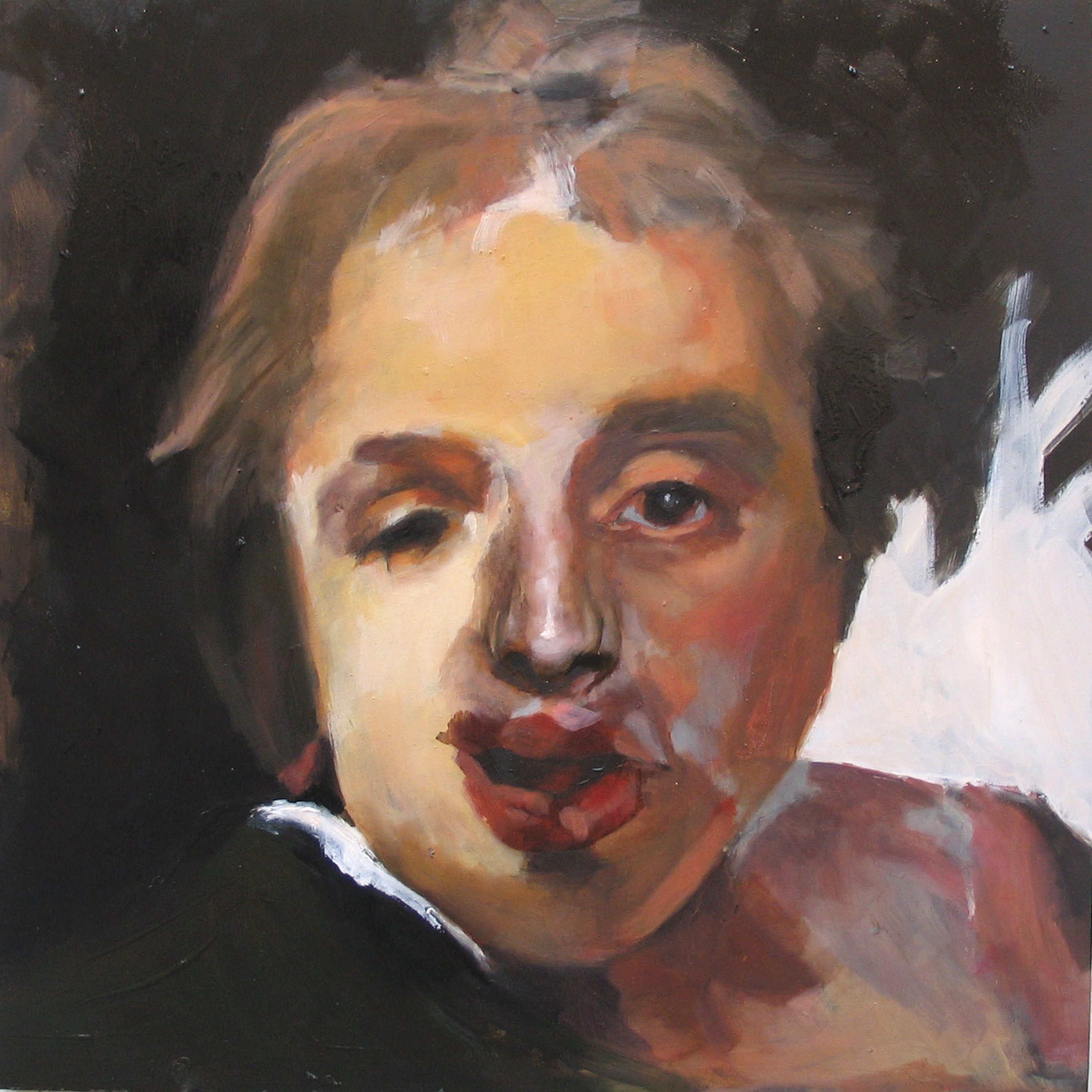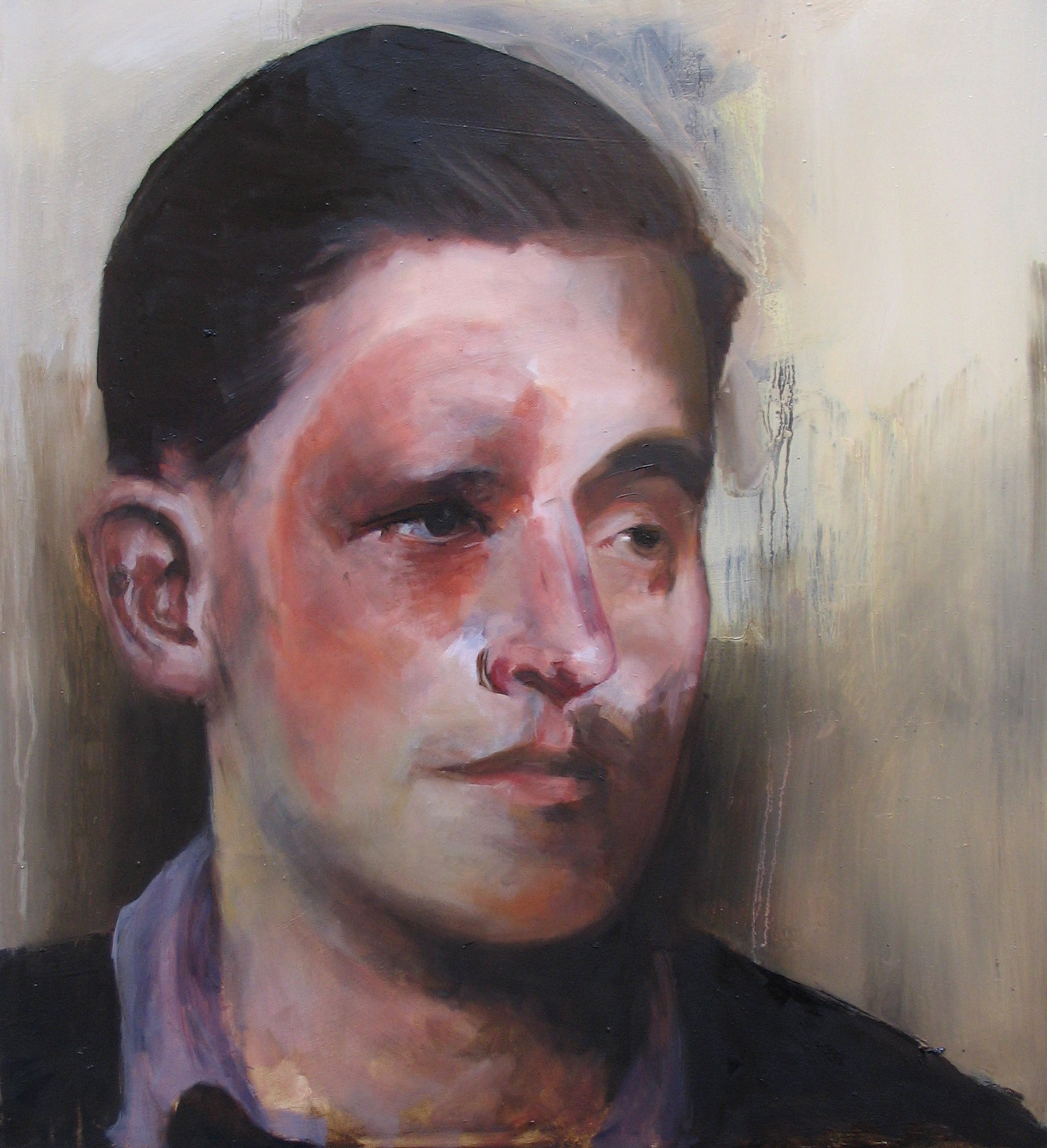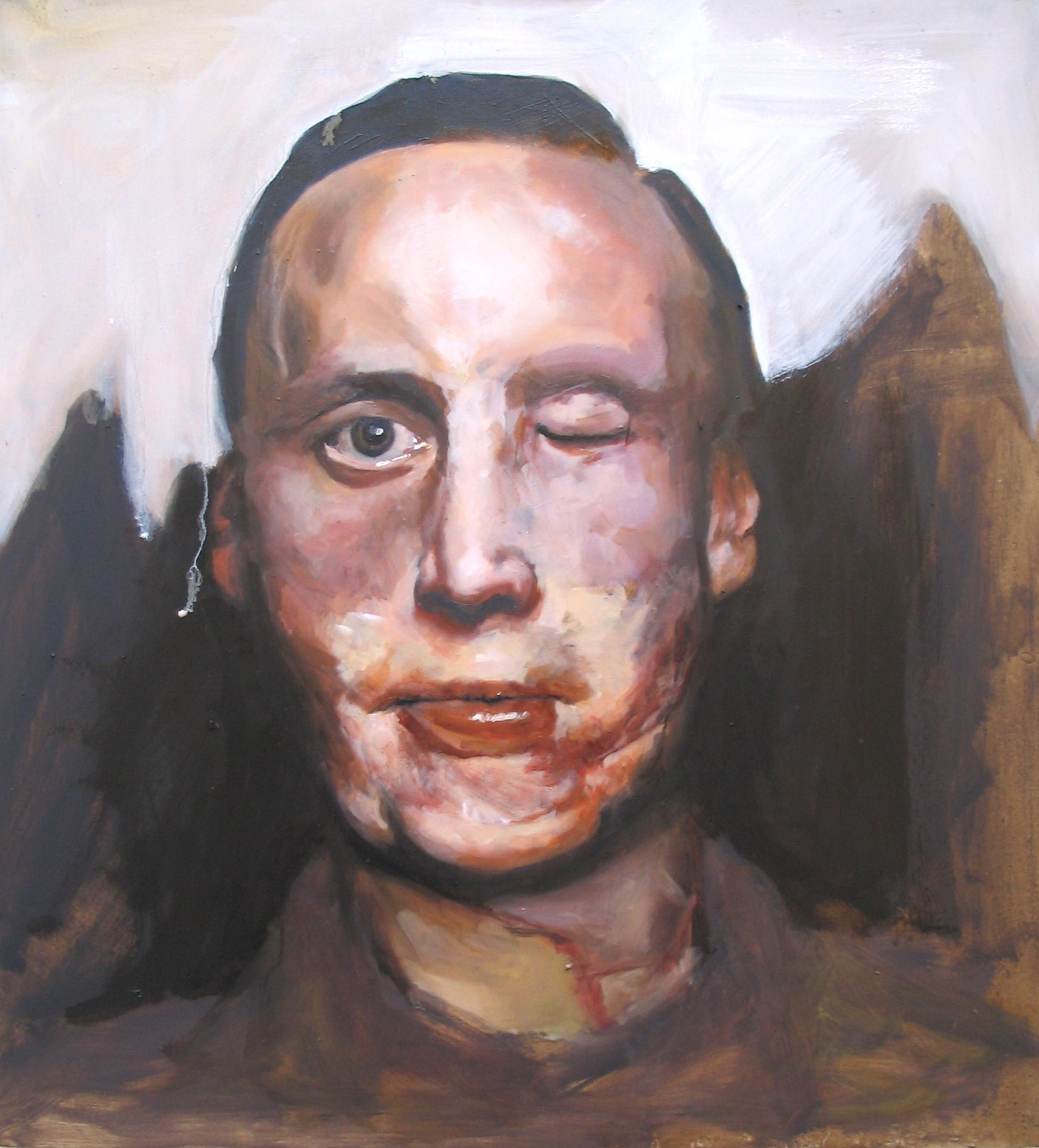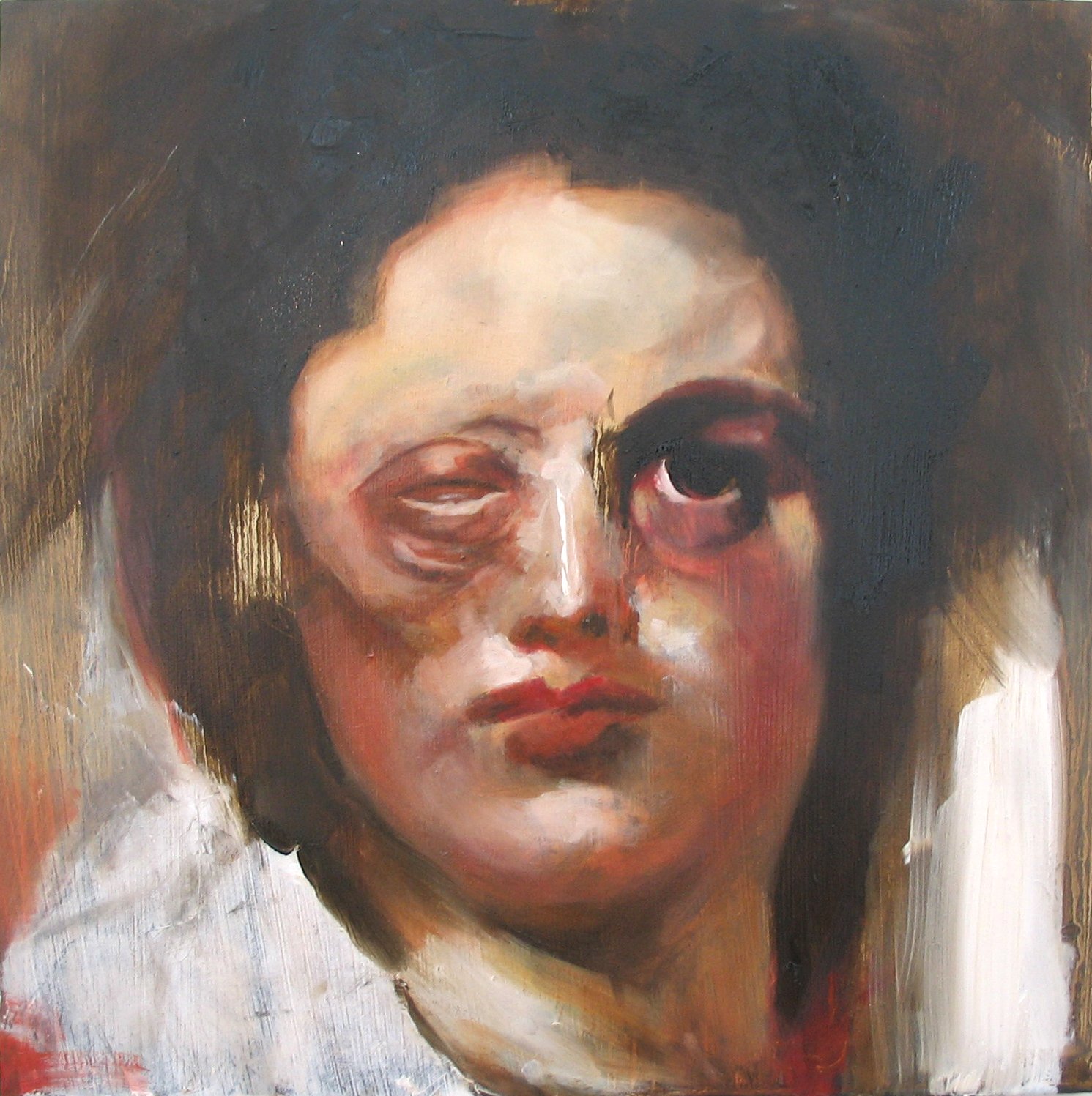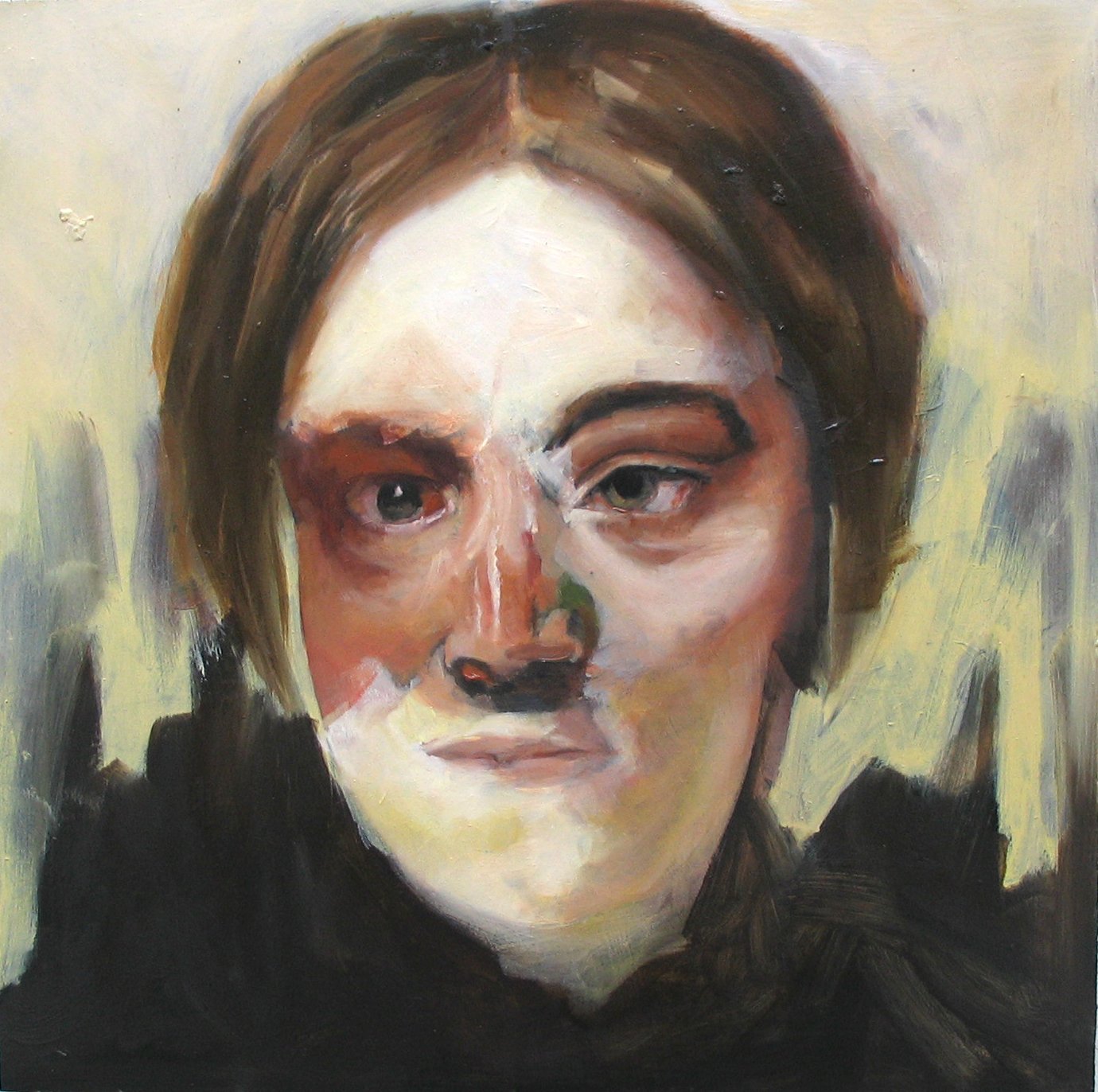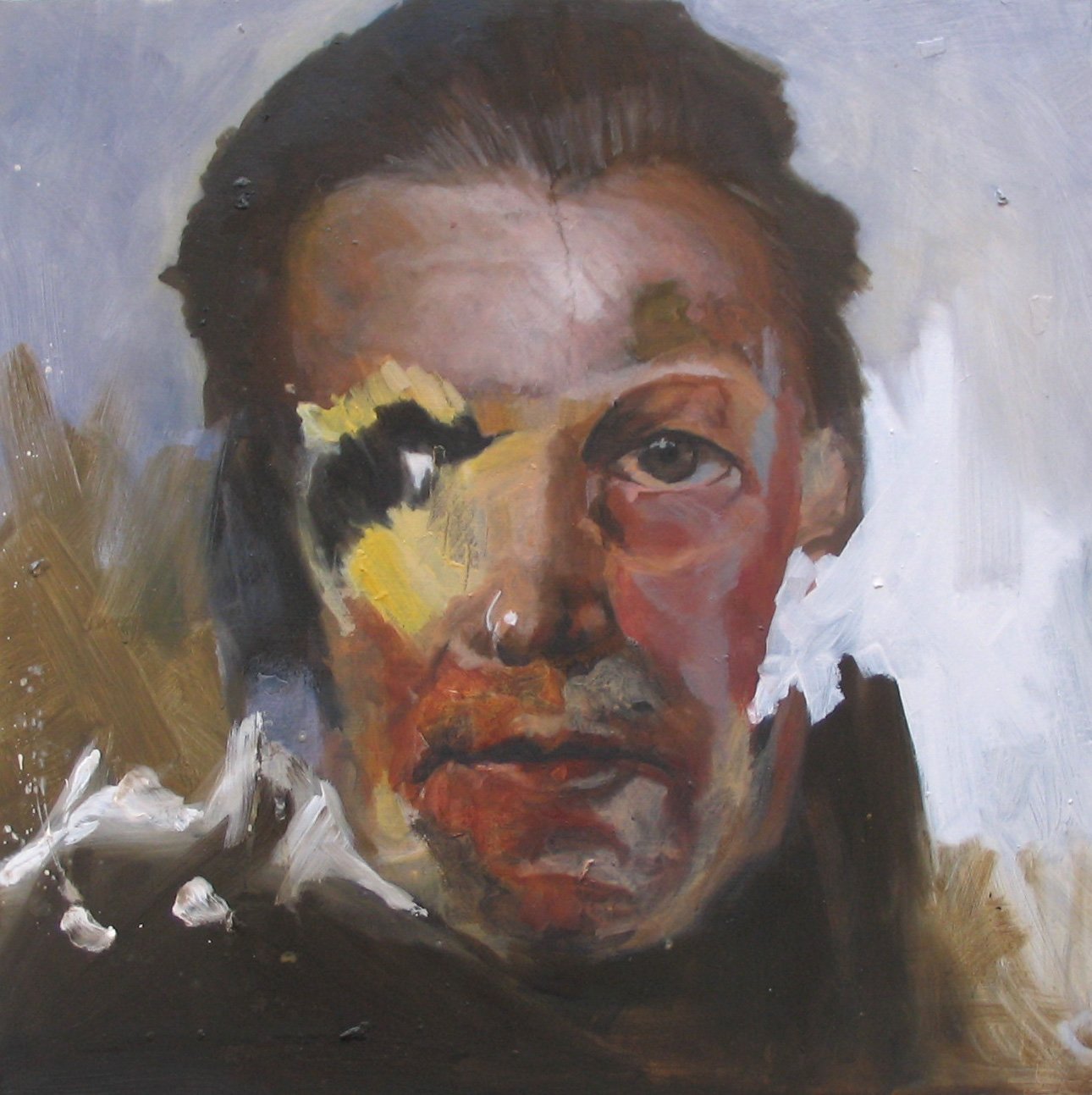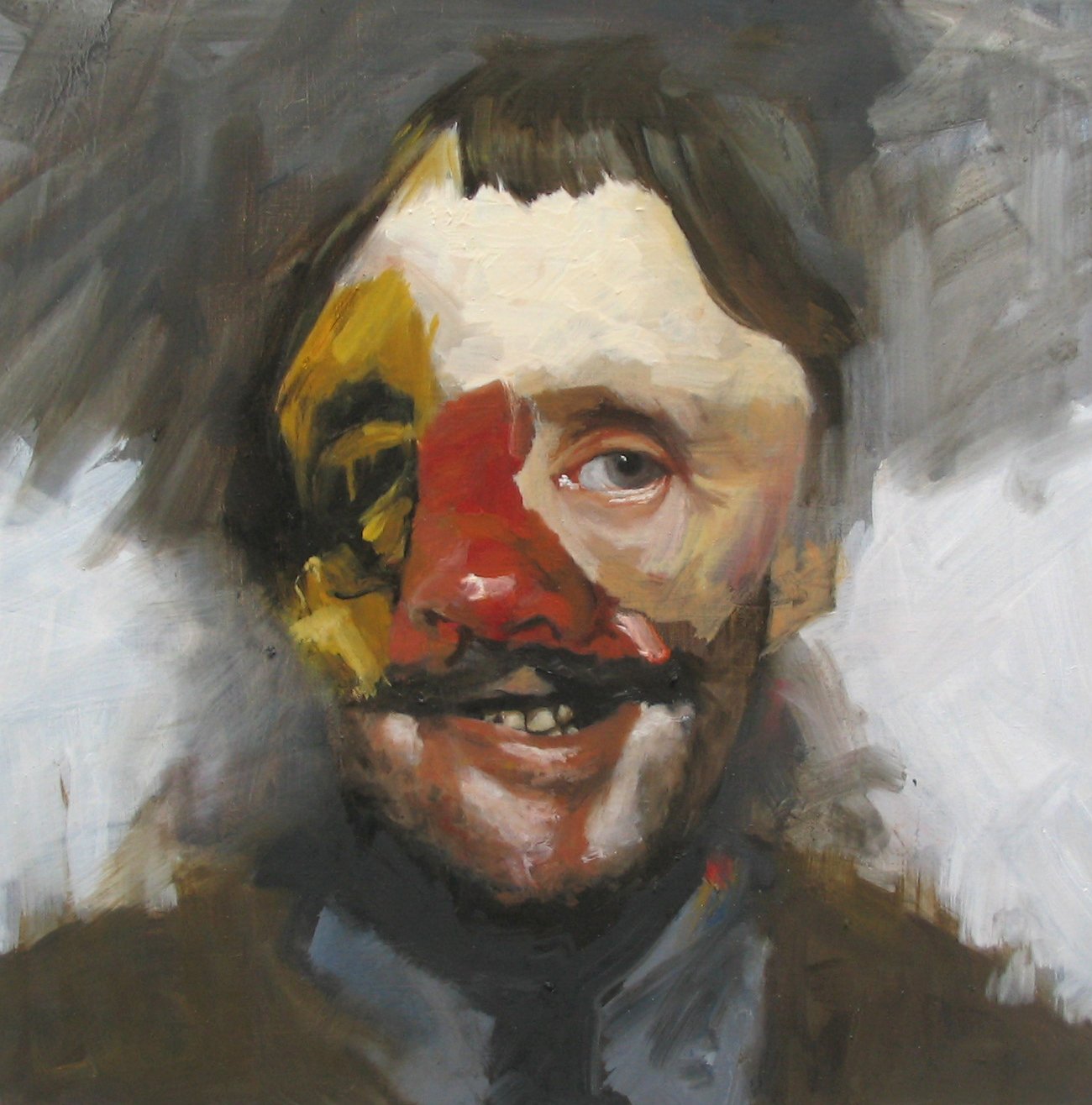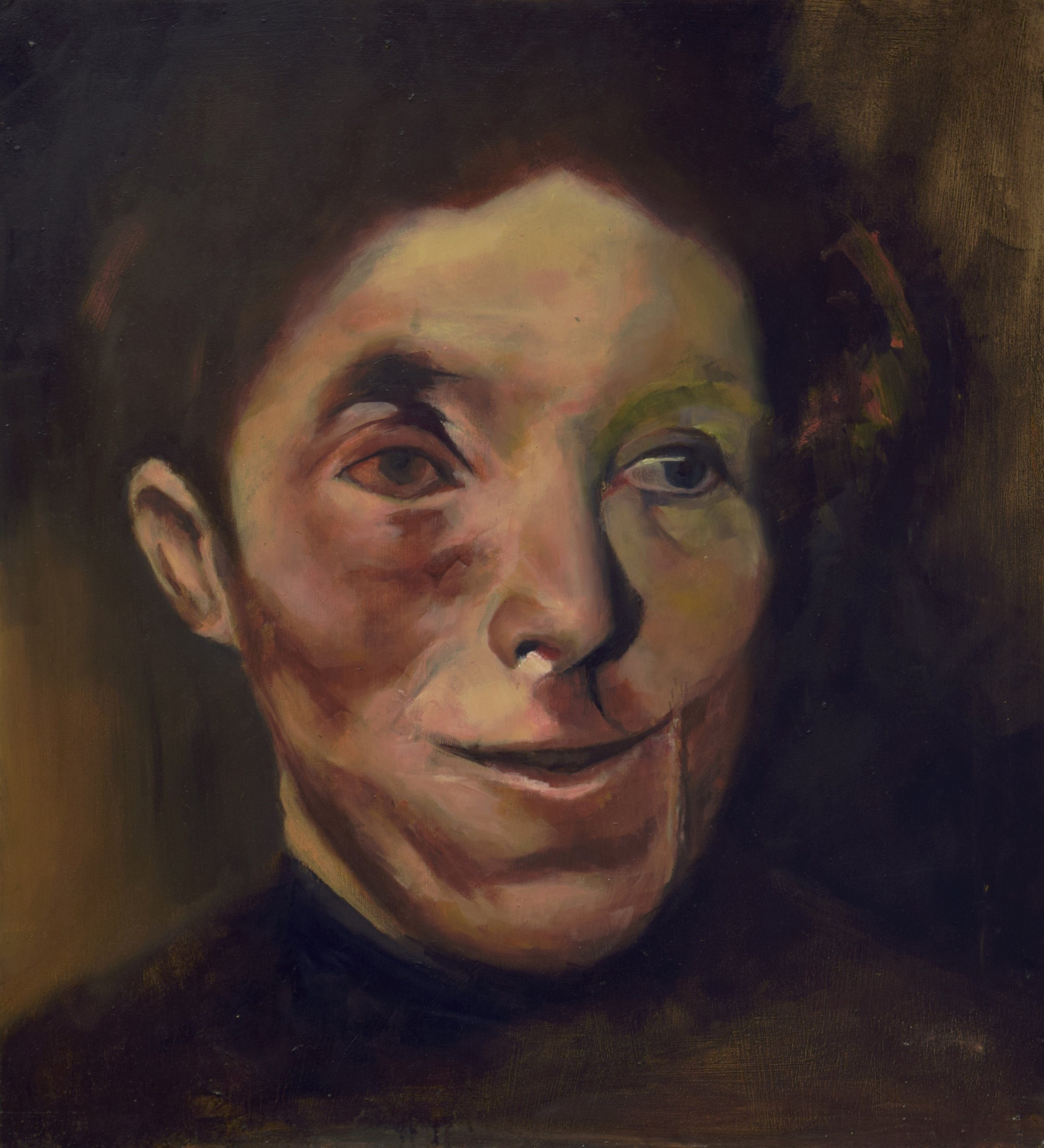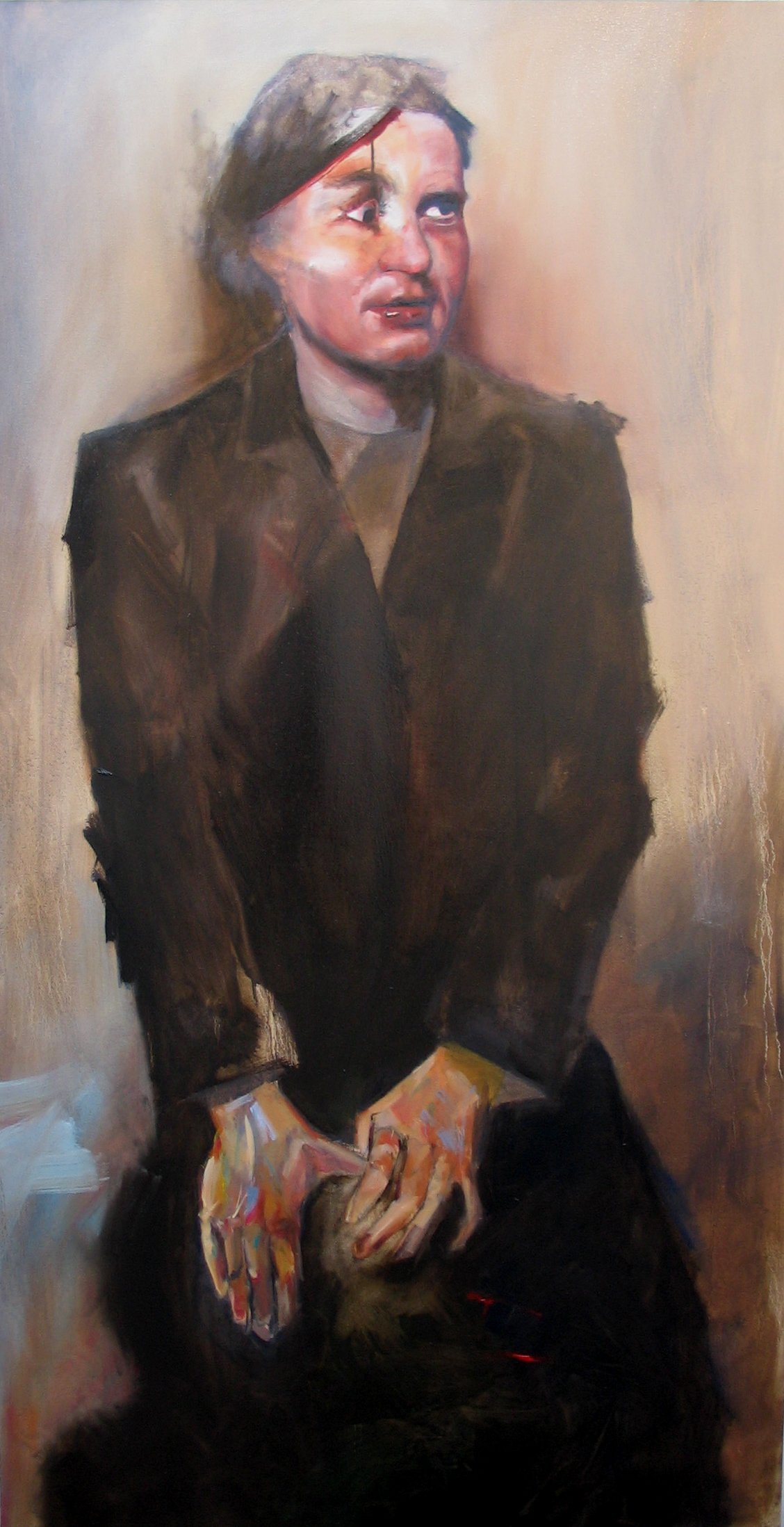Philip Gurrey, Madder139, London, UK
MADDER139 is delighted to present Philip Gurrey, a recent graduate from Glasgow School of Art. In a series of paintings Gurrey explores notions of introspection, concentrating on the bridge between contemporary culture and visual art and its historical precedents. Reminiscent of a DJ, Gurrey pieces together portraits from the Enlightenment period and like a surgeon with his scalpel, sculpts a new vision. Old, renowned faces become twisted into contemporary fleshy faces of humour and pathos.
Gurrey focuses upon people of high status and interest, in wealth, politics and service. Robert Manners, an English soldier and nobleman was knighted for his efforts. Margaretha de Geer, a wife of a wealthy merchant whom Rembrandt painted on more than one occasion. Viscount Castlereagh, the Foreign Secretary for a decade and later leader of the House of Commons, who was born with a club foot and committed suicide with a letter opener, after assumptions of loosing his wit, due to bad press and antagonistic regard from the public. Shelley damned Castlereagh in his poem ‘The Masque of Anarchy’ hinting that he was like a murderer; barbaric and bloodthirsty,
I met Murder on the way –
He had a face like Castlereagh –
Very smooth he looked, yet grim;
Seven bloodhounds followed him
All were fat; and well they might
Be in admirable plight,
For one by one, and two by two,
He tossed them human hearts to chew
Which from his wide cloak he drew.
and Lord Byron scrawled obscenities on his grave, bidding travellers to ‘stop and piss’.
Gurrey filches fragments from all these varying characters of intrigue, darning their faces together to form complex portraits, like time distorted jigsaw puzzles; juxtaposing the past with the present and the aristocratic with the proletariat. Painting as if it is the operating table; Gurrey slices, snips and amalgamates their differences together, so doll-like faces of gammy eyes, oozing burns and bulbous, cranked noses haunt the spectator.
The portraits glower, despite some of the eyes being so disfigured that they can not open. Gurrey’s fixation on making the eyes the most highlighted part of his victims is a subtle touch upon their subconscious, taking Donne’s, Shakespeare’s and many others' affirmation that the “eyes are the windows to the soul” [1]. The viewer is thus drawn in to contemplate and reflect the life behind these mangled, faceless remains. Each face looks directly out at the viewer in a Western Custom of total honesty, as each self seeks to be exposed. By highlighting the exterior so vividly Gurrey perversely provokes the viewer to scratch beneath the surface to reveal the very core essence and nature of the human condition.
Gurrey paints in an androgynous manner, illustrating the dichotomy of the self by often segregating his subjects in two, highlighting the concept of the ‘split self’ and the notion of many different personalities in one face. Goya is also renowned for this, most noticeably in ‘Two Old Men, 1821-23’, where Goya himself is depicted as an ageing man, confronted by a dark demon (his alto ego) whispering in his ear. The dichotomy is further exacerbated in the ageing man’s face where the eyes are visibly different, the right eye gawking out in a challenging manner, glaring directly upon the viewer, while the left cowers evasively in the clinical, vacant shade.
Extracting components from Hennell’s photographs of reconstructive surgery to WW1 soldiers to Van Dycks, Reynolds and Tonks Gurrey constructs faces that comprise the elegance of a Velazquez, with the painterly deftness of a Saville. This ‘piecing together’ of images from times past not only accentuates the images' nostalgic selves but also hints at another form of grafting; the renovating of the body unnecessarily, with today’s narcissistic onslaught of Botox and Face-Lifting. By distorting his victims’ deformities to a heightened level; the spectator is left even more chilled in the acknowledgement of society’s vanity, as we each meddle with our own physical attributes in a desire to sculpt a vision of perfect beauty.
Philip Gurrey was born in 1984 and lives and works in Scotland. Gurrey has shown at the Royal Scottish Academy in Edinburgh, was awarded the British Airways Student Travel Award 2007 and featured in The Sunday Times Culture supplement on young artists in August 2007. The exhibition at MADDER139 will be Gurrey’s first UK solo show. We will be showing Philip Gurrey’s work at PULSE, New York, 27th-30th March 2008 and at NEXT, the emerging invitational art fair in Chicago, 25th-28th April 2008.
[1] Thomas Phaer (c.1510-1560)
